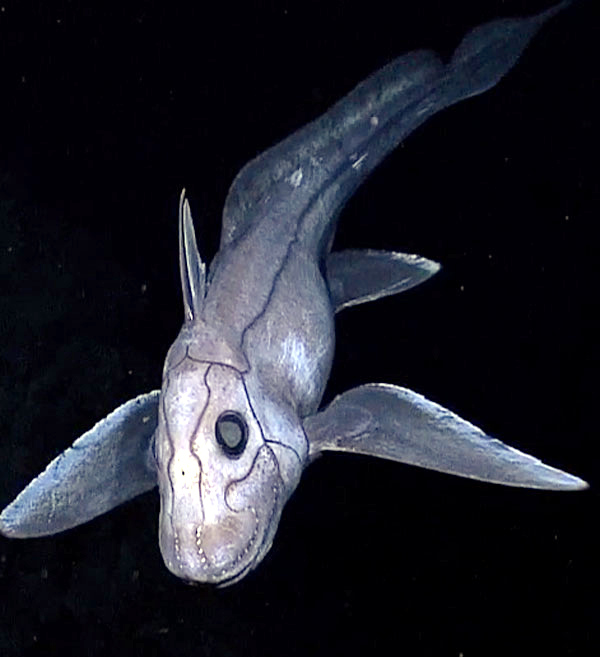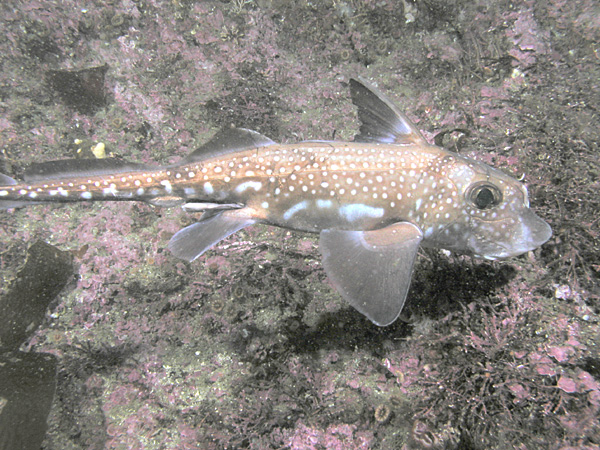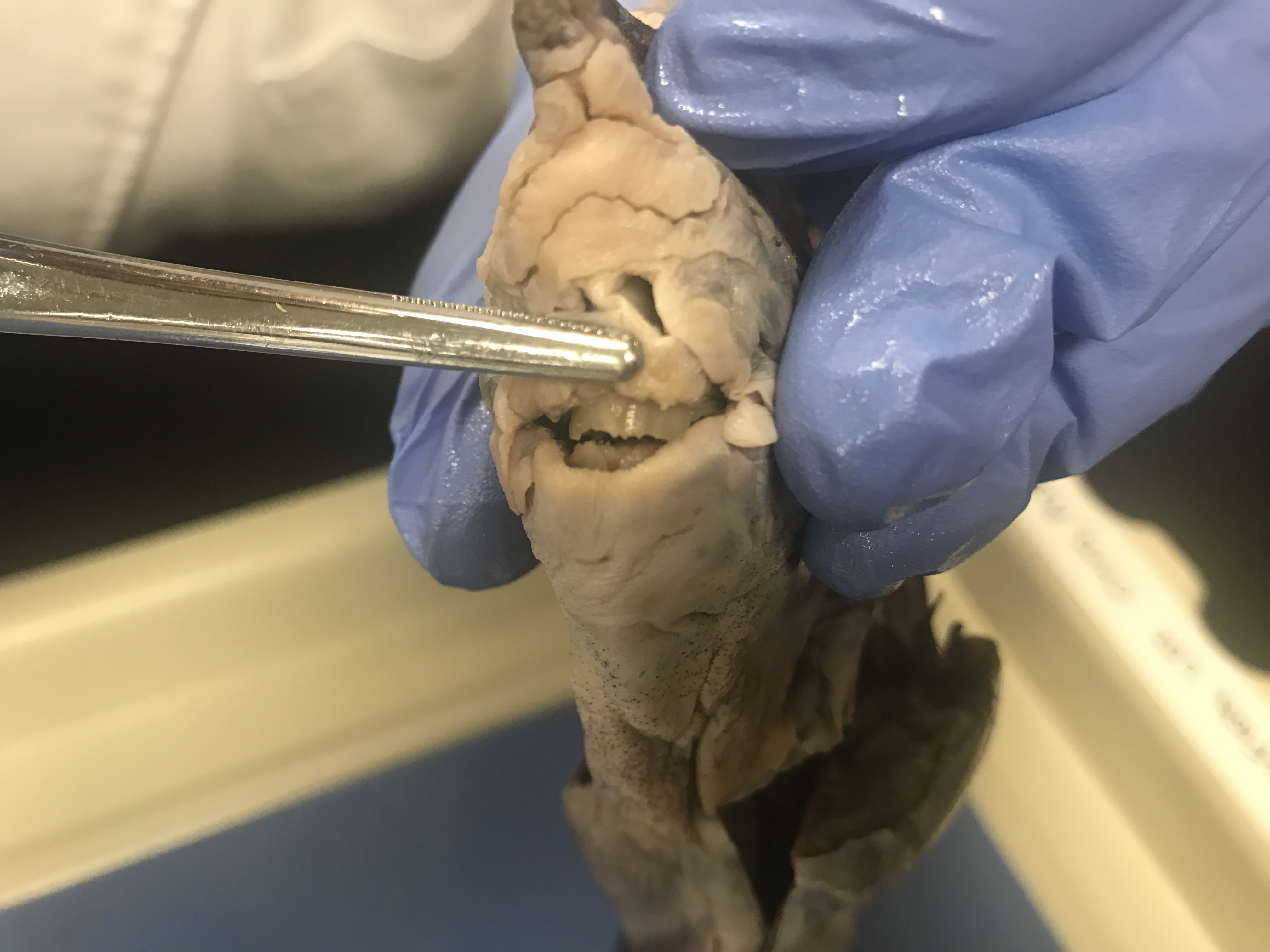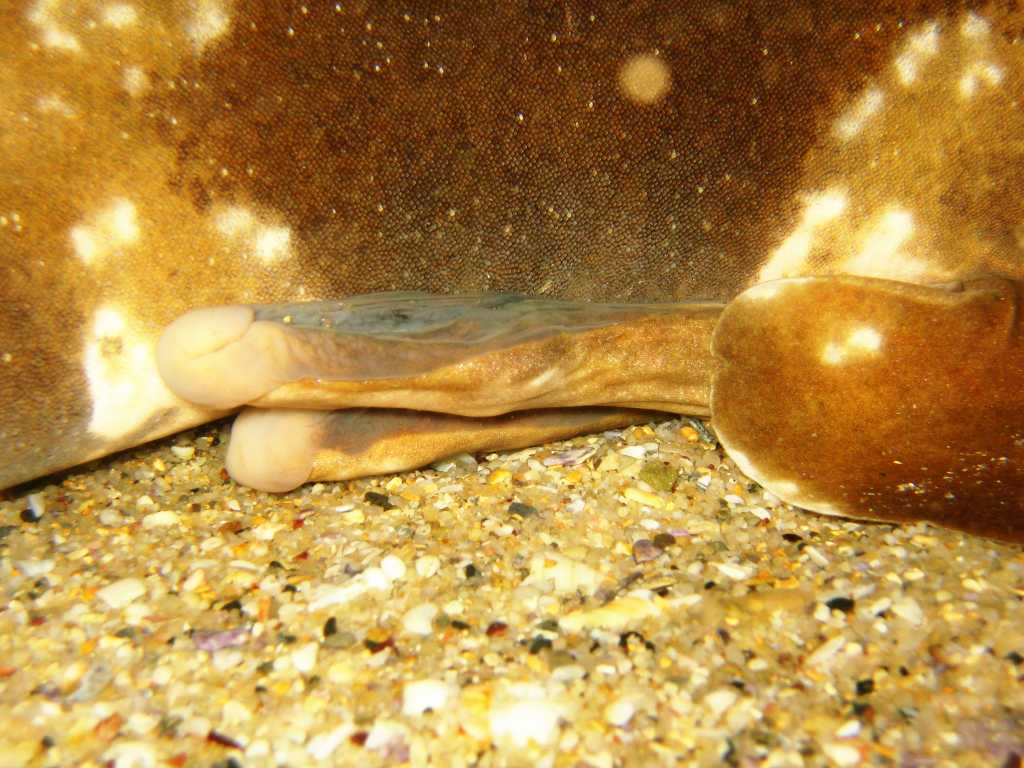|
Chimaera
Chimaeras are cartilaginous fish in the order Chimaeriformes , known informally as ghost sharks, rat fish, spookfish, or rabbit fish; the last three names are not to be confused with rattails, Opisthoproctidae, or Siganidae, respectively. At one time a "diverse and abundant" group (based on the fossil record), their closest living relatives are sharks and rays, though their last common ancestor with them lived nearly 400 million years ago. Today, they are largely confined to deep water. Description and habits Chimaeras live in temperate ocean floors down to deep, with few occurring at depths shallower than . Exceptions include the members of the genus ''Callorhinchus'', the rabbit fish and the spotted ratfish, which locally or periodically can be found at shallower depths. Consequently, these are also among the few species from the chimaera order kept in public aquaria. They live in all the oceans except for the Arctic and Antarctic oceans. They have elongated, soft ... [...More Info...] [...Related Items...] OR: [Wikipedia] [Google] [Baidu] |
Callorhinchidae
Chimaeras are cartilaginous fish in the order Chimaeriformes , known informally as ghost sharks, rat fish, spookfish, or rabbit fish; the last three names are not to be confused with rattails, Opisthoproctidae, or Siganidae, respectively. At one time a "diverse and abundant" group (based on the fossil record), their closest living relatives are sharks and rays, though their last common ancestor with them lived nearly 400 million years ago. Today, they are largely confined to deep water. Description and habits Chimaeras live in temperate ocean floors down to deep, with few occurring at depths shallower than . Exceptions include the members of the genus '' Callorhinchus'', the rabbit fish and the spotted ratfish, which locally or periodically can be found at shallower depths. Consequently, these are also among the few species from the chimaera order kept in public aquaria. They live in all the oceans except for the Arctic and Antarctic oceans. They have elongated, ... [...More Info...] [...Related Items...] OR: [Wikipedia] [Google] [Baidu] |
Chimaeridae
The Chimaeridae, or short-nosed chimaeras, are a family of cartilaginous fish. They resemble other chimaeras in general form and habits, but have short, rounded snouts, without the modifications found in related families. Many species have long, tapering tails, giving them an alternative name of ratfish. Shortnose chimaeras have a venomous spine on their backs, which is sufficiently dangerous to injure humans. They are found in temperate and tropical marine waters worldwide. Most species are restricted to depths below , but a few, notably the spotted ratfish and rabbit fish, can locally be found at relatively shallow depths. They range from in maximum total length, depending on species. Species The species are grouped into two genera and include: Family Chimaeridae * Genus '' Chimaera'' Linnaeus, 1758 ** '' Chimaera argiloba'' Last, W. T. White & Pogonoski, 2008 (whitefin chimaera) ** '' Chimaera bahamaensis'' Kemper, Ebert, Didier & Compagno, 2010 (Bahamas ghosts ... [...More Info...] [...Related Items...] OR: [Wikipedia] [Google] [Baidu] |
Rhinochimaeridae
The Rhinochimaeridae, commonly known as long-nosed chimaeras, are a family of cartilaginous fish. They are similar in form and habits to other chimaeras, but have an exceptionally long conical or paddle-shaped snout. The snout has numerous sensory nerve endings, and is used to find food such as small fish. The first dorsal fin includes a mildly venomous spine, used in defense. Long-nosed chimaeras are found in temperate and tropical seas worldwide, from in depth. In August 2020, a long-nosed chimaera was brought up from off the Grand Banks of Newfoundland. They range from in maximum total length, depending on species. Species The eight known species are in three genera: Family Rhinochimaeridae * Genus ''Harriotta'' Goode & Bean, 1895 ** ''Harriotta haeckeli'' Karrer, 1972 (smallspine spookfish) ** ''Harriotta raleighana'' Goode & Bean, 1895 (narrownose chimaera) * Genus '' Neoharriotta'' Bigelow & Schroeder, 1950 ** '' Neoharriotta carri'' Bullis & J. S. Carpenter ... [...More Info...] [...Related Items...] OR: [Wikipedia] [Google] [Baidu] |
Callorhinchus
''Callorhinchus'', the plough-nosed chimaeras or elephantfish, are the only living genus in the family Callorhinchidae (sometimes spelled Callorhynchidae). A few extinct genera only known from fossil remains are recognized. ''Callorhinchus'' spp, are similar in form and habits to other chimaeras, but are distinguished by the presence of an elongated, flexible, fleshy snout, with a vague resemblance to a ploughshare. They are only found in the oceans of the Southern Hemisphere along the ocean bottom on muddy and sandy substrates. They filter feed, with small shellfish making up the bulk of their diet. The plough-nosed chimaera lays eggs on the ocean floor that hatch at around 8 months. They are currently not a target of conservation efforts; however, they may be susceptible to overfishing and trawling. Morphology Plough-nose chimaeras range from about in total length. Their usual color is black or brown, and, often a mixture between the two. While the club-like snout makes ele ... [...More Info...] [...Related Items...] OR: [Wikipedia] [Google] [Baidu] |
Chondrichthyes
Chondrichthyes (; ) is a class that contains the cartilaginous fishes that have skeletons primarily composed of cartilage. They can be contrasted with the Osteichthyes or ''bony fishes'', which have skeletons primarily composed of bone tissue. Chondrichthyes are jawed vertebrates with paired fins, paired nares, scales, and a heart with its chambers in series. Extant chondrichthyes range in size from the 10 cm (3.9 in) finless sleeper ray to the 10 m (32 ft) whale shark. The class is divided into two subclasses: Elasmobranchii ( sharks, rays, skates, and sawfish) and Holocephali (chimaeras, sometimes called ghost sharks, which are sometimes separated into their own class). Within the infraphylum Gnathostomata, cartilaginous fishes are distinct from all other jawed vertebrates. Anatomy Skeleton The skeleton is cartilaginous. The notochord is gradually replaced by a vertebral column during development, except in Holocephali, where the notochord stays intact. In some d ... [...More Info...] [...Related Items...] OR: [Wikipedia] [Google] [Baidu] |
Hydrolagus Colliei
The spotted ratfish (''Hydrolagus colliei'') is a chimaera found in the north-eastern Pacific Ocean. Often seen by divers at night in the Pacific Northwest, this cartilaginous fish gets its characteristic name from a pointed rat-like tail. The ratfish lays leathery egg cases on the bottom of muddy or sandy areas, which are often mistaken by divers as something inanimate. While mainly a deep-water species, it occurs at shallower depths in the northern part of its range. The generic name, ''Hydrolagus'', comes from the Greek words ὕδωρ, meaning water,Liddell, H.G. & Scott, R. (1940). ''A Greek-English Lexicon. revised and augmented throughout by Sir Henry Stuart Jones. with the assistance of. Roderick McKenzie.'' Oxford: Clarendon Press. and λαγώς/λαγῶς, meaning hare, and the specific name honors Alexander Collie, who was a ship surgeon and early naturalist. The spotted ratfish is common in much of its range, not typically eaten by humans, and is not commercial ... [...More Info...] [...Related Items...] OR: [Wikipedia] [Google] [Baidu] |
Spotted Ratfish
The spotted ratfish (''Hydrolagus colliei'') is a chimaera found in the north-eastern Pacific Ocean. Often seen by divers at night in the Pacific Northwest, this cartilaginous fish gets its characteristic name from a pointed rat-like tail. The ratfish lays leathery egg cases on the bottom of muddy or sandy areas, which are often mistaken by divers as something inanimate. While mainly a deep-water species, it occurs at shallower depths in the northern part of its range. The generic name, ''Hydrolagus'', comes from the Greek words ὕδωρ, meaning water,Liddell, H.G. & Scott, R. (1940). ''A Greek-English Lexicon. revised and augmented throughout by Sir Henry Stuart Jones. with the assistance of. Roderick McKenzie.'' Oxford: Clarendon Press. and λαγώς/λαγῶς, meaning hare, and the specific name honors Alexander Collie, who was a ship surgeon and early naturalist. The spotted ratfish is common in much of its range, not typically eaten by humans, and is not commercial ... [...More Info...] [...Related Items...] OR: [Wikipedia] [Google] [Baidu] |
Clasper
In biology, a clasper is a male anatomical structure found in some groups of animals, used in mating. Male cartilaginous fish have claspers formed from the posterior portion of their pelvic fin which serve to channel semen into the female's cloaca during mating. The act of mating in some fish including sharks usually includes one of the claspers raised to allow water into the siphon through a specific orifice. The clasper is then inserted into the cloaca, where it opens like an umbrella to anchor its position. The siphon then begins to contract, expelling water and sperm. The claspers of many shark species have spines or hooks, which may hold them in place during copulation. Male chimaeras have cephalic claspers (tenacula) on their heads, which are thought to aid in holding the female during mating. In entomology, it is a structure in male insects that is used to hold the female during copulation (see Lepidoptera genitalia for more). See also *Sexual coercion among animal ... [...More Info...] [...Related Items...] OR: [Wikipedia] [Google] [Baidu] |
Barreleye
Barreleyes, also known as spook fish (a name also applied to several species of chimaera), are small deep-sea argentiniform fish comprising the family Opisthoproctidae found in tropical-to-temperate waters of the Atlantic, Pacific, and Indian Oceans. These fish are named because of their barrel-shaped, tubular eyes, which are generally directed upwards to detect the silhouettes of available prey; however, the fish are capable of directing their eyes forward, as well. The family name Opisthoproctidae is derived from the Greek words ''opisthe'' 'behind' and ''proktos'' 'anus'. Description The morphology of the Opisthoproctidae varies between three main forms: the stout, deep-bodied barreleyes of the genera '' Opisthoproctus'' and ''Macropinna'', the extremely slender and elongated spookfishes of the genera ''Dolichopteryx'' and ''Bathylychnops'', and the intermediate fusiform spookfishes of the genera ''Rhynchohyalus'' and '' Winteria''. All species have large, telesco ... [...More Info...] [...Related Items...] OR: [Wikipedia] [Google] [Baidu] |
Chimaera Monstrosa
''Chimaera monstrosa'', also known as the rabbit fish or rat fish, is a northeast Atlantic and Mediterranean species of cartilaginous fish in the family Chimaeridae. The rabbit fish is known for its characteristically large head and small, tapering body. With large eyes, nostrils, and tooth plates, the head gives them a rabbit-like appearance, hence the nickname “Rabbit fish”. They can grow to and live for up to 30 years. Description The appearance of ''C. monstrosa'' shares characteristics of its distant relatives, sharks. It characteristically has a large head and a tapering body that ends in its whip-like tail, and has a short snout with an overhanging mouth. The top dorsal fin is positioned high on the spine of the fish, and is triangular and tall in height. Positioned in the mid-section of the fish, the spine runs throughout the length of the fish and continuously joins with the upper part of the caudal fin; this dorsal spine is also mildly poisonous and can cause p ... [...More Info...] [...Related Items...] OR: [Wikipedia] [Google] [Baidu] |
Venom
Venom or zootoxin is a type of toxin produced by an animal that is actively delivered through a wound by means of a bite, sting, or similar action. The toxin is delivered through a specially evolved ''venom apparatus'', such as fangs or a stinger, in a process called envenomation. Venom is often distinguished from poison, which is a toxin that is passively delivered by being ingested, inhaled, or absorbed through the skin, and toxungen, which is actively transferred to the external surface of another animal via a physical delivery mechanism. Venom has evolved in terrestrial and marine environments and in a wide variety of animals: both predators and prey, and both vertebrates and invertebrates. Venoms kill through the action of at least four major classes of toxin, namely necrotoxins and cytotoxins, which kill cells; neurotoxins, which affect nervous systems; myotoxins, which damage muscles; and haemotoxins, which disrupt blood clotting. Venomous animals cause tens of t ... [...More Info...] [...Related Items...] OR: [Wikipedia] [Google] [Baidu] |
Placoid Scale
A fish scale is a small rigid plate that grows out of the skin of a fish. The skin of most jawed fishes is covered with these protective scales, which can also provide effective camouflage through the use of reflection and colouration, as well as possible hydrodynamic advantages. The term ''scale'' derives from the Old French , meaning a shell pod or husk. Scales vary enormously in size, shape, structure, and extent, ranging from strong and rigid armour plates in fishes such as shrimpfishes and boxfishes, to microscopic or absent in fishes such as eels and anglerfishes. The morphology of a scale can be used to identify the species of fish it came from. Scales originated within the jawless ostracoderms, ancestors to all jawed fishes today. Most bony fishes are covered with the cycloid scales of salmon and carp, or the ctenoid scales of perch, or the ganoid scales of sturgeons and gars. Cartilaginous fishes (sharks and rays) are covered with placoid scales. Some species ... [...More Info...] [...Related Items...] OR: [Wikipedia] [Google] [Baidu] |











